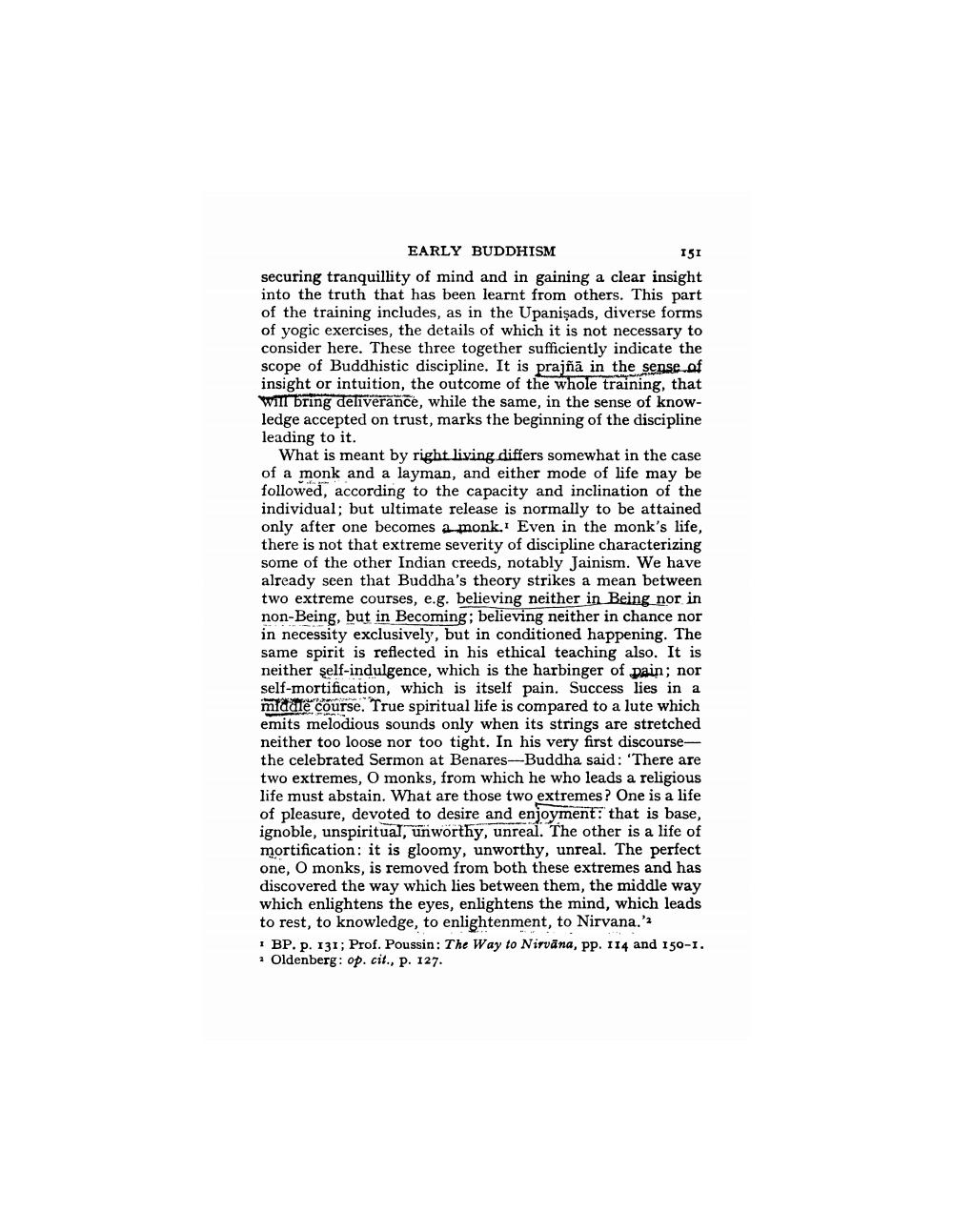________________
EARLY BUDDHISM
151 securing tranquillity of mind and in gaining a clear insight into the truth that has been learnt from others. This part of the training includes, as in the Upanişads, diverse forms of yogic exercises, the details of which it is not necessary to consider here. These three together sufficiently indicate the scope of Buddhistic discipline. It is prajñā in the sense of insight or intuition, the outcome of the whole training, that WII bring deliverance, while the same, in the sense of knowledge accepted on trust, marks the beginning of the discipline leading to it.
What is meant by right living differs somewhat in the case of a monk and a layman, and either mode of life may be followed, according to the capacity and inclination of the individual; but ultimate release is normally to be attained only after one becomes a monk. Even in the monk's life, there is not that extreme severity of discipline characterizing some of the other Indian creeds, notably Jainism. We have already seen that Buddha's theory strikes a mean between two extreme courses, e.g. believing neither in Being nor in non-Being, but in Becoming; believing neither in chance nor in necessity exclusively, but in conditioned happening. The same spirit is reflected in his ethical teaching also. It is neither şelf-indulgence, which is the harbinger of pain, nor self-mortification, which is itself pain. Success lies in a middle course. True spiritual life is compared to a lute which emits melodious sounds only when its strings are stretched neither too loose nor too tight. In his very first discoursethe celebrated Sermon at Benares-Buddha said: 'There are two extremes, O monks, from which he who leads a religious life must abstain. What are those two extremes? One is a life of pleasure, devoted to desire and enjoyment: that is base, ignoble, unspiritual, unworthy, unreal. The other is a life of mortification: it is gloomy, unworthy, unreal. The perfect one, O monks, is removed from both these extremes and has discovered the way which lies between them, the middle way which enlightens the eyes, enlightens the mind, which leads to rest, to knowledge, to enlightenment, to Nirvana.' 1 BP. p. 131; Prof. Poussin: The Way to Nirvana, pp. 114 and 150-1. * Oldenberg: op. cit., p. 127.




